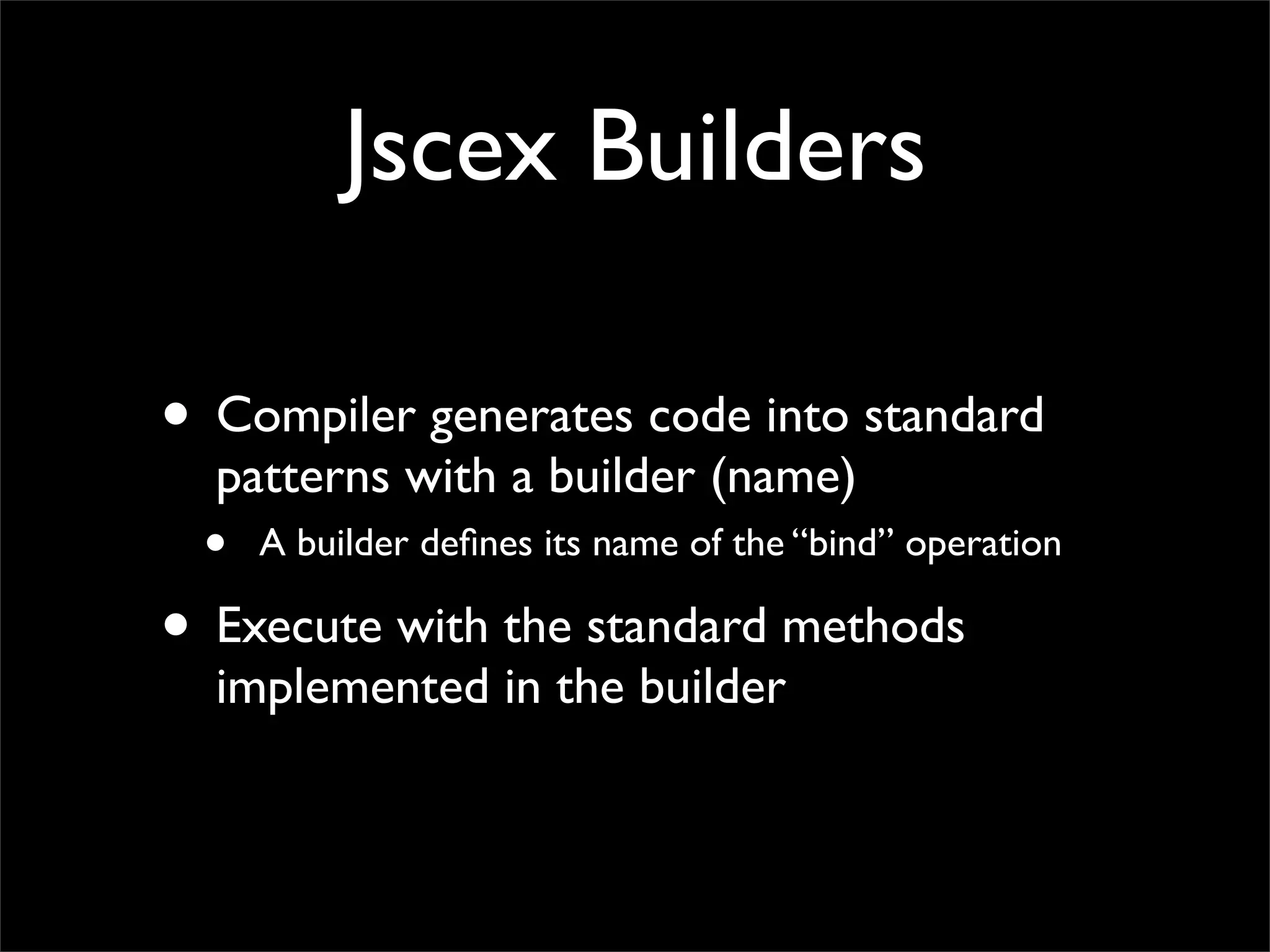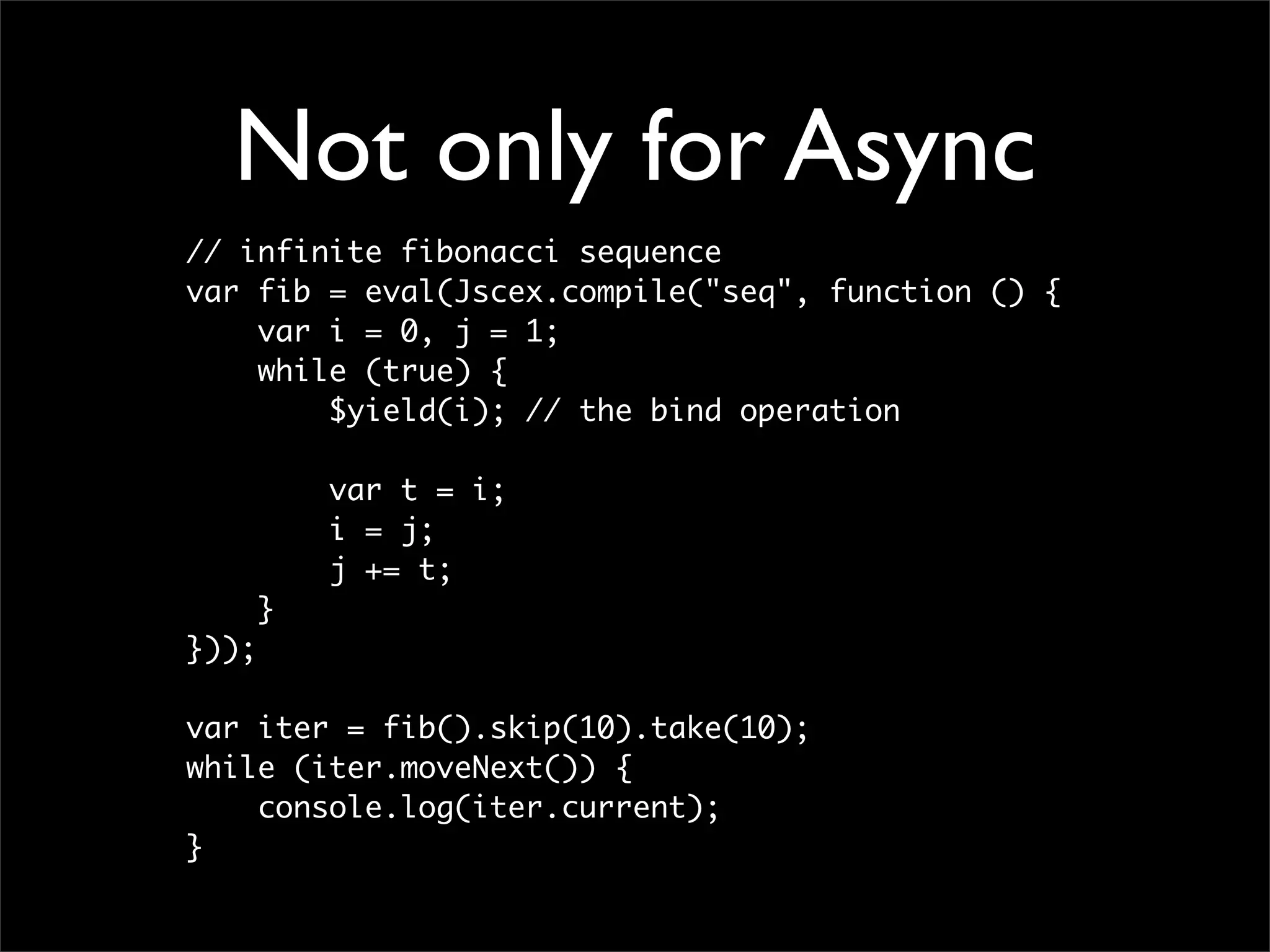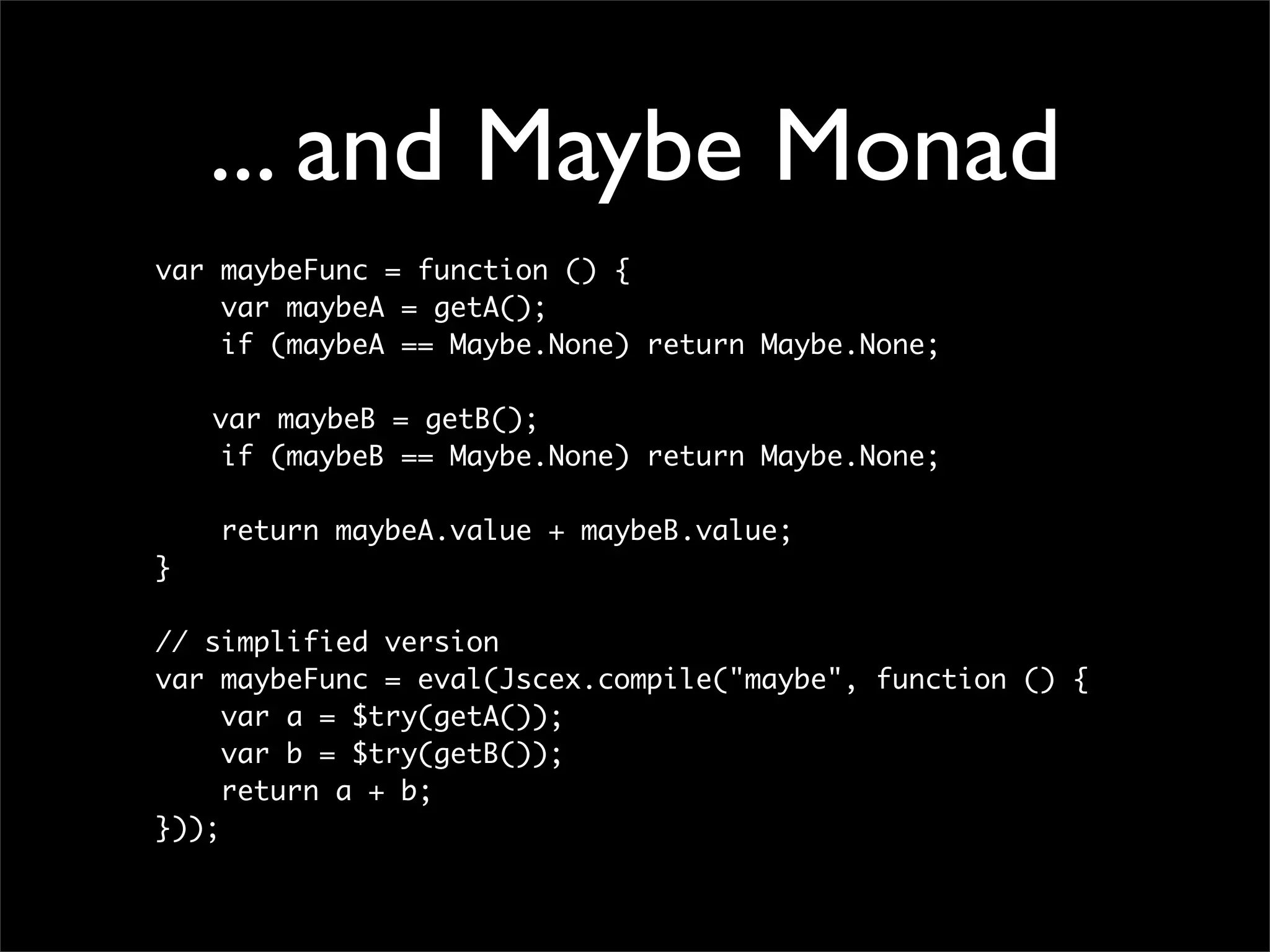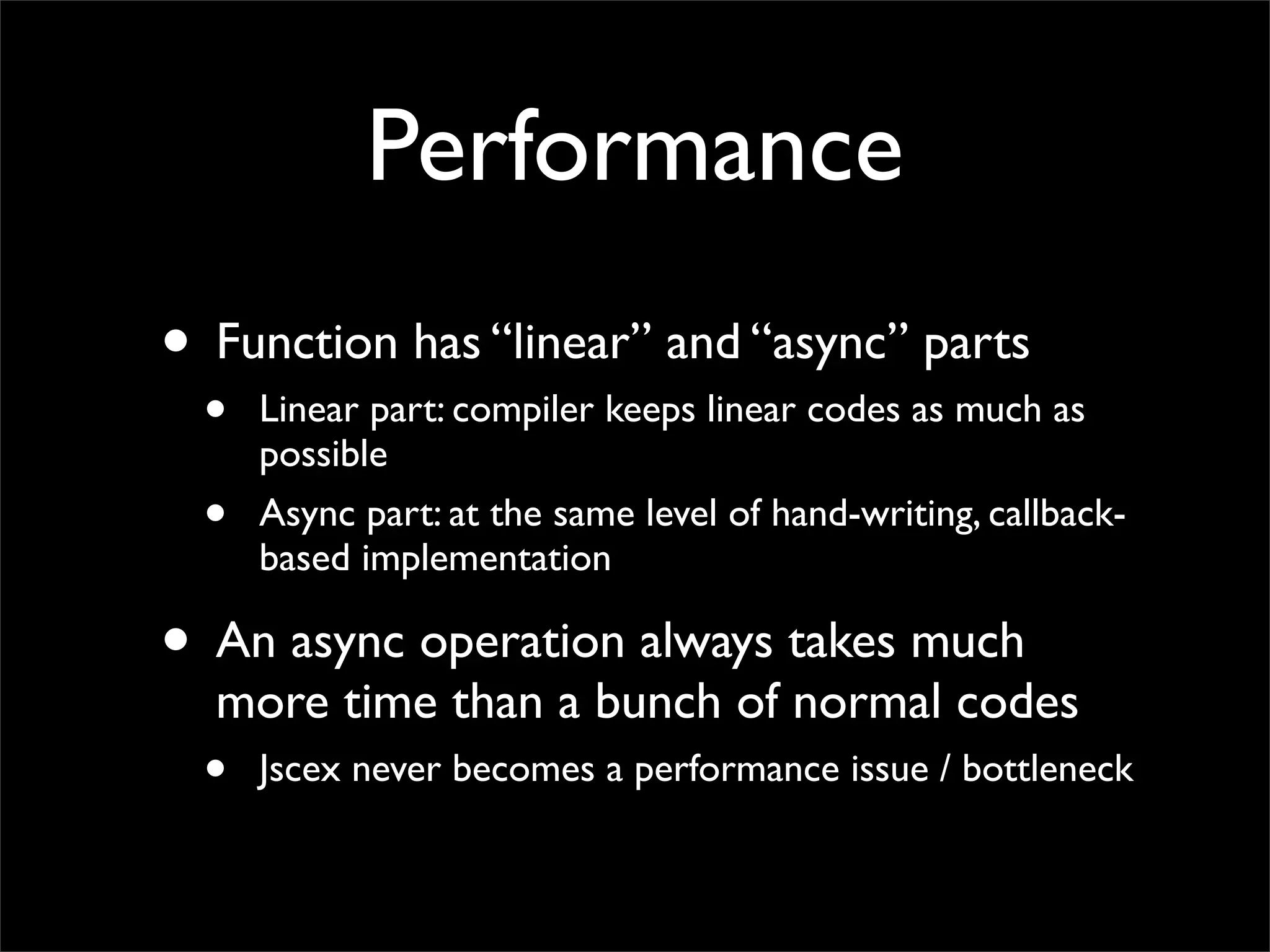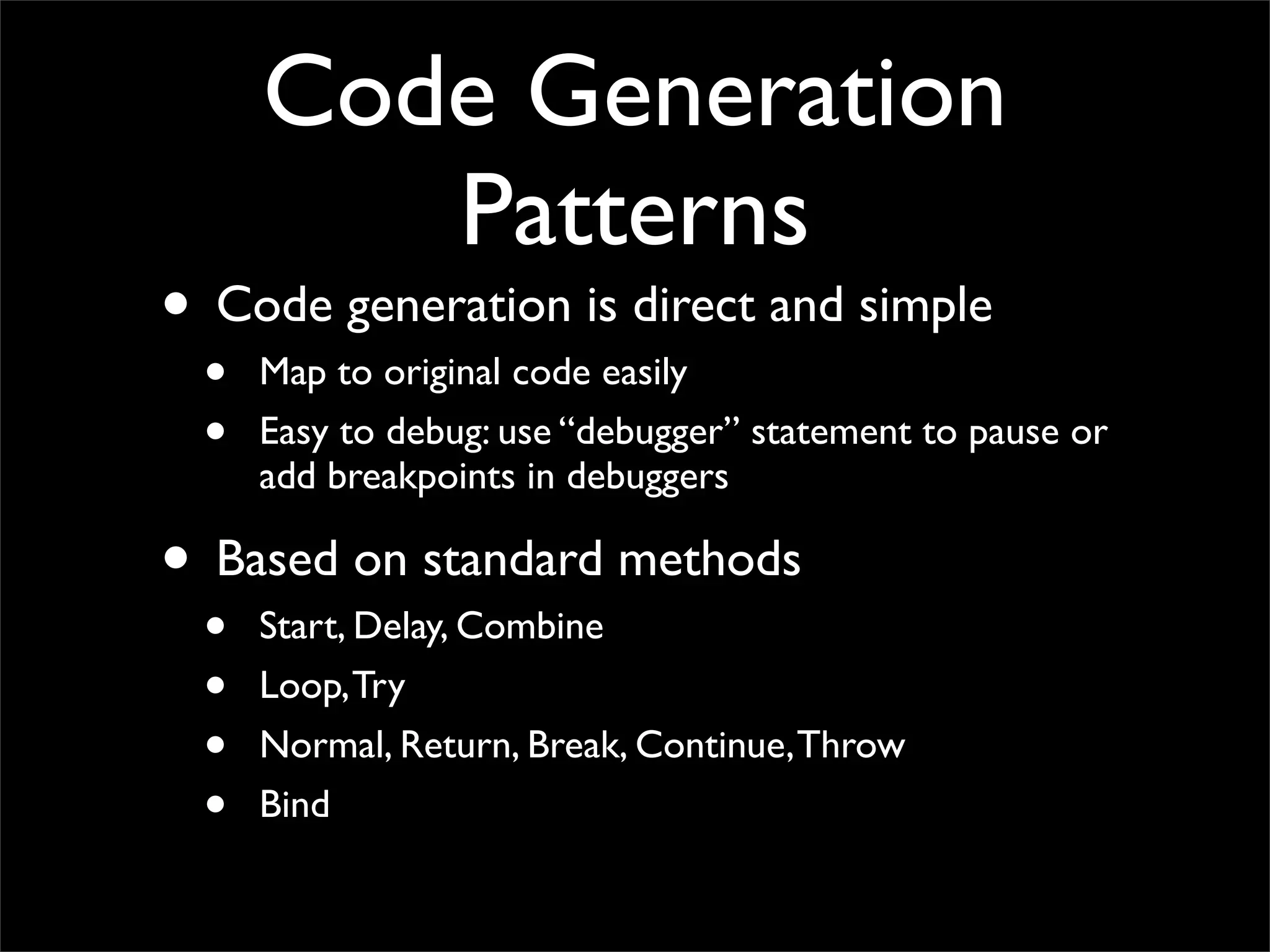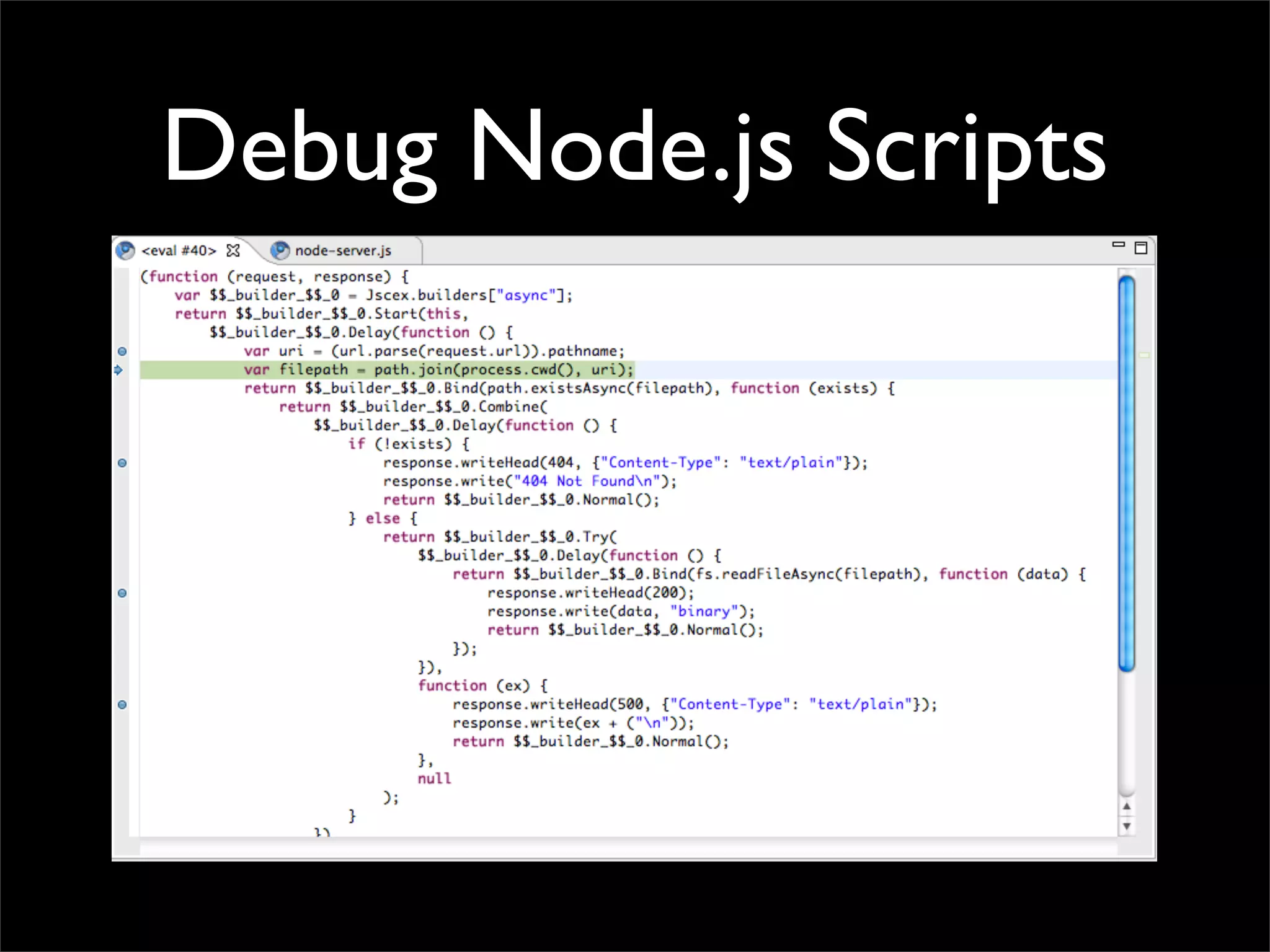The document introduces Jscex, a JavaScript library that provides computation expressions to help with common programming scenarios in JavaScript. It allows writing asynchronous code in a synchronous-looking way. Key points:
- Jscex is a library, not a language, framework or runtime. It works with any JavaScript engine.
- It keeps the JavaScript language semantics and allows programming asynchronously without breaking code locality.
- Examples show how it can be used to animate bubble sort and handle asynchronous operations like HTTP requests in an easier way compared to promises or callbacks.





![Bubble Sort
var compare = function (x, y) {
return x - y;
}
var swap = function (a, i, j) {
var t = a[x]; a[x] = a[y]; a[y] = t;
}
var bubbleSort = function (array) {
for (var x = 0; x < array.length; x++) {
for (var y = 0; y < array.length - x; y++) {
if (compare(array[y], array[y + 1]) > 0) {
swap(array, y, y + 1);
}
}
}
}](https://image.slidesharecdn.com/jscex-110515222707-phpapp02/75/Jscex-Write-Sexy-JavaScript-6-2048.jpg)
![Animate it!
var compare = function (x, y, callback) { var innerLoop = function (array, x, y, callback) {
setTimeout(10, function () { if (y < array.length - x) {
callback(x - y); compare(array[y], array[y + 1], function (r) {
}); if (r > 0) {
} swap(array, y, y + 1, function () {
innerLoop(array, x, y + 1, callback);
var swap = function (a, i, j, callback) { });
var t = a[x]; a[x] = a[y]; a[y] = t; } else {
repaint(a); innerLoop(array, x, y + 1, callback);
}
setTimeout(20, callback); });
} } else {
callback();
var outerLoop = function (array, x, callback) { }
if (x < array) { }
innerLoop(array, x, 0, function () {
outerLoop(array, x + 1, callback); outerLoop(array, 0, function () {
}); console.log("done!");
} else { });
callback();
}
}](https://image.slidesharecdn.com/jscex-110515222707-phpapp02/75/Jscex-Write-Sexy-JavaScript-7-2048.jpg)
![Animate it!
at?
var compare = function (x, y, callback) {
th
var innerLoop = function (array, x, y, callback) {
is
setTimeout(10, function () { if (y < array.length - x) {
callback(x - y); compare(array[y], array[y + 1], function (r) {
ll
}); if (r > 0) {
} swap(array, y, y + 1, function () {
e
innerLoop(array, x, y + 1, callback);
h
var swap = function (a, i, j, callback) { });
var t = a[x]; a[x] = a[y]; a[y] = t; } else {
e
repaint(a); innerLoop(array, x, y + 1, callback);
h
}
t
setTimeout(20, callback); });
t
} } else {
a
callback();
h
var outerLoop = function (array, x, callback) { }
if (x < array) { }
innerLoop(array, x, 0, function () {
W
outerLoop(array, x + 1, callback); outerLoop(array, 0, function () {
}); console.log("done!");
} else { });
callback();
}
}](https://image.slidesharecdn.com/jscex-110515222707-phpapp02/75/Jscex-Write-Sexy-JavaScript-8-2048.jpg)
![Bubble Sort Animation
var compareAsync = eval(Jscex.compile("async", function (x, y) {
$await(Jscex.Async.sleep(10)); // each "compare" takes 10 ms.
return x - y;
}));
var swapAsync = eval(Jscex.compile("async", function (a, x, y) {
var t = a[x]; a[x] = a[y]; a[y] = t; // swap
repaint(a); // repaint after each swap
$await(Jscex.Async.sleep(20)); // each "swap" takes 20 ms.
}));
var bubbleSortAsync = eval(Jscex.compile("async", function (array) {
for (var x = 0; x < array.length; x++) {
for (var y = 0; y < array.length - x; y++) {
var r = $await(compareAsync(array[y], array[y + 1]));
if (r > 0) $await(swapAsync(array, y, y + 1));
}
}
}));](https://image.slidesharecdn.com/jscex-110515222707-phpapp02/75/Jscex-Write-Sexy-JavaScript-9-2048.jpg)
![Bubble Sort Animation
var compareAsync = eval(Jscex.compile("async", function (x, y) {
$await(Jscex.Async.sleep(10)); // each "compare" takes 10 ms.
return x - y;
}));
var swapAsync = eval(Jscex.compile("async", function (a, x, y) {
var t = a[x]; a[x] = a[y]; a[y] = t; // swap
repaint(a); // repaint after each swap
$await(Jscex.Async.sleep(20)); // each "swap" takes 20 ms.
}));
var bubbleSortAsync = eval(Jscex.compile("async", function (array) {
for (var x = 0; x < array.length; x++) {
for (var y = 0; y < array.length - x; y++) {
var r = $await(compareAsync(array[y], array[y + 1]));
if (r > 0) $await(swapAsync(array, y, y + 1));
}
}
}));](https://image.slidesharecdn.com/jscex-110515222707-phpapp02/75/Jscex-Write-Sexy-JavaScript-10-2048.jpg)

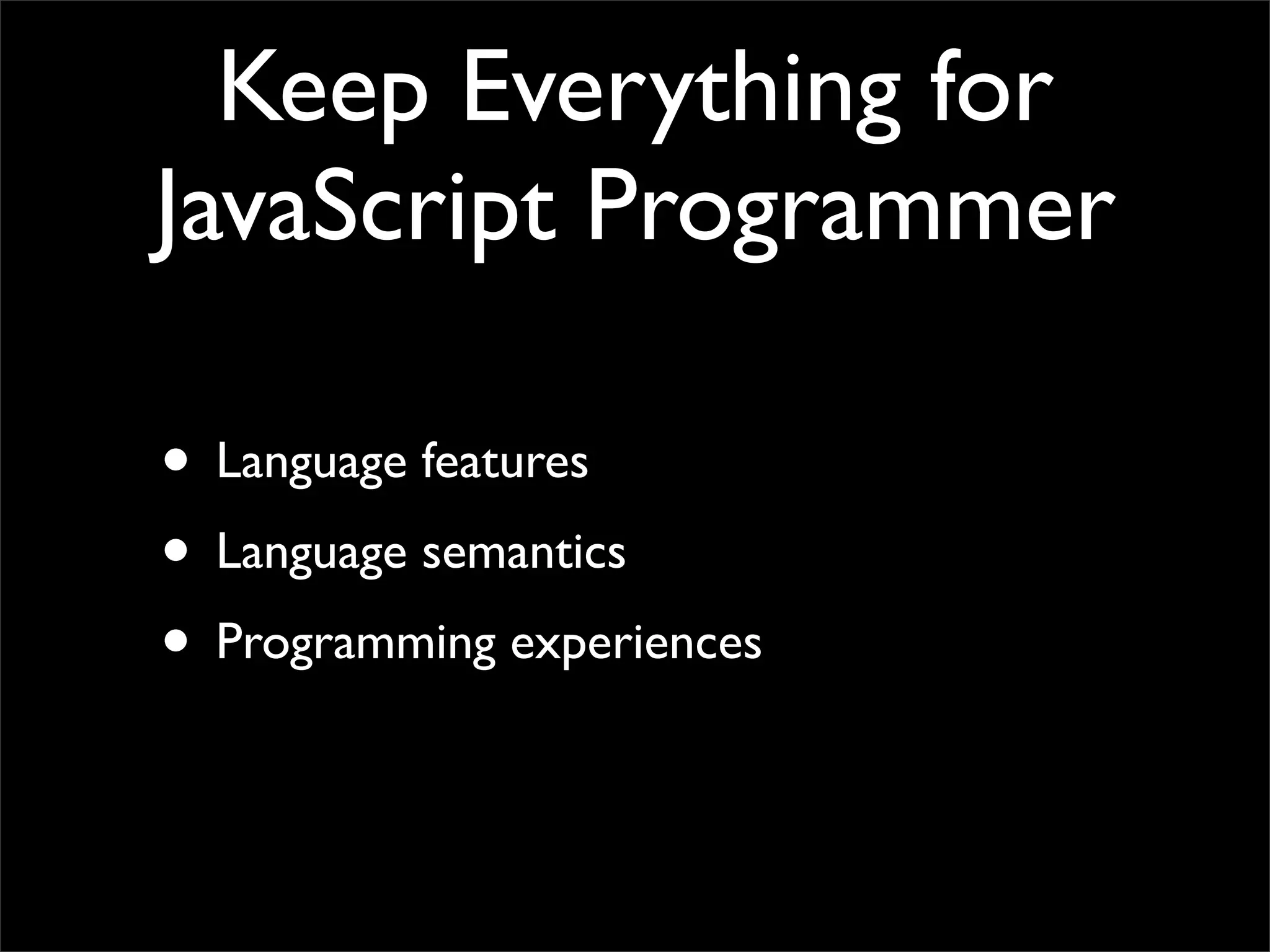
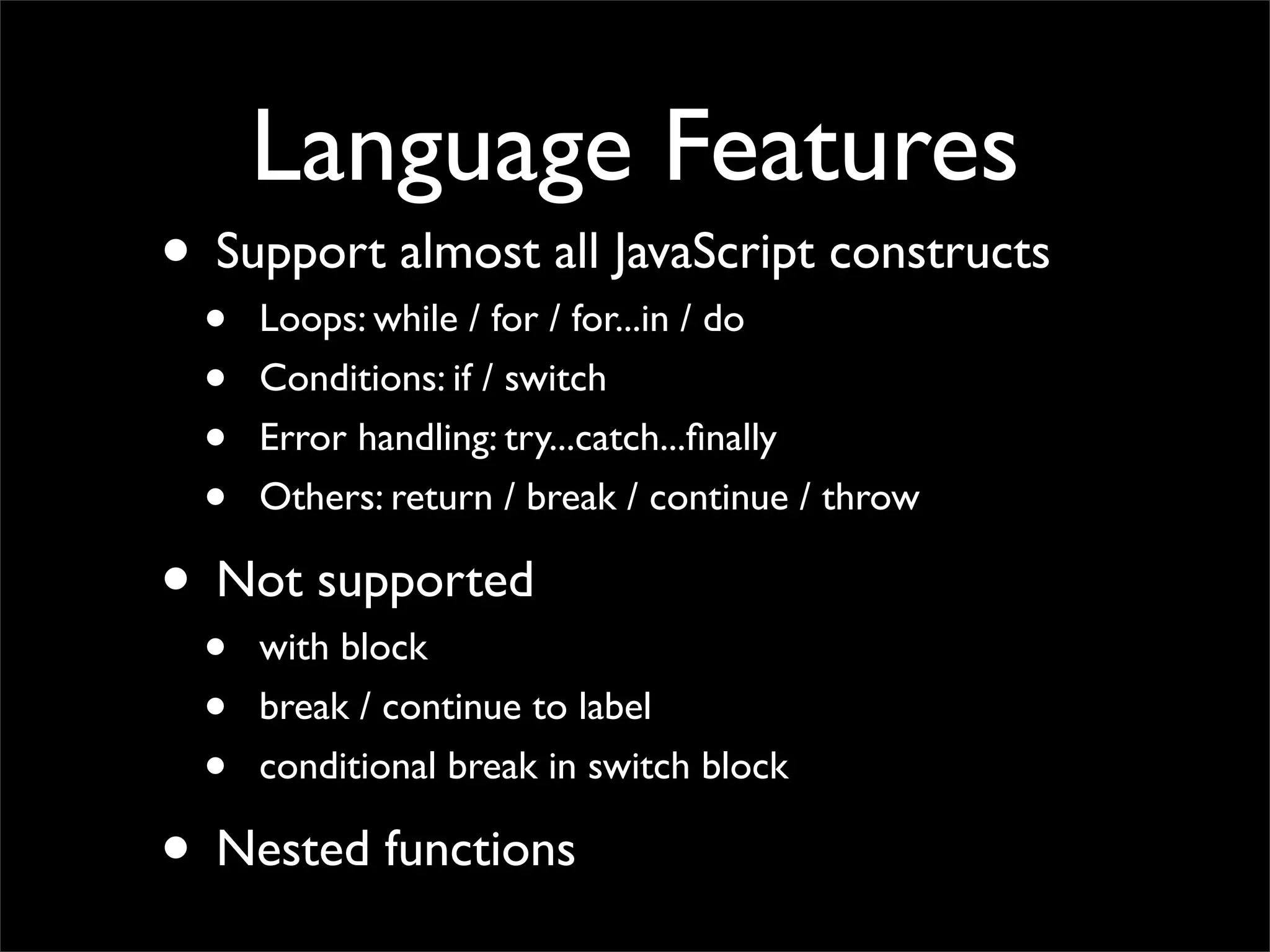
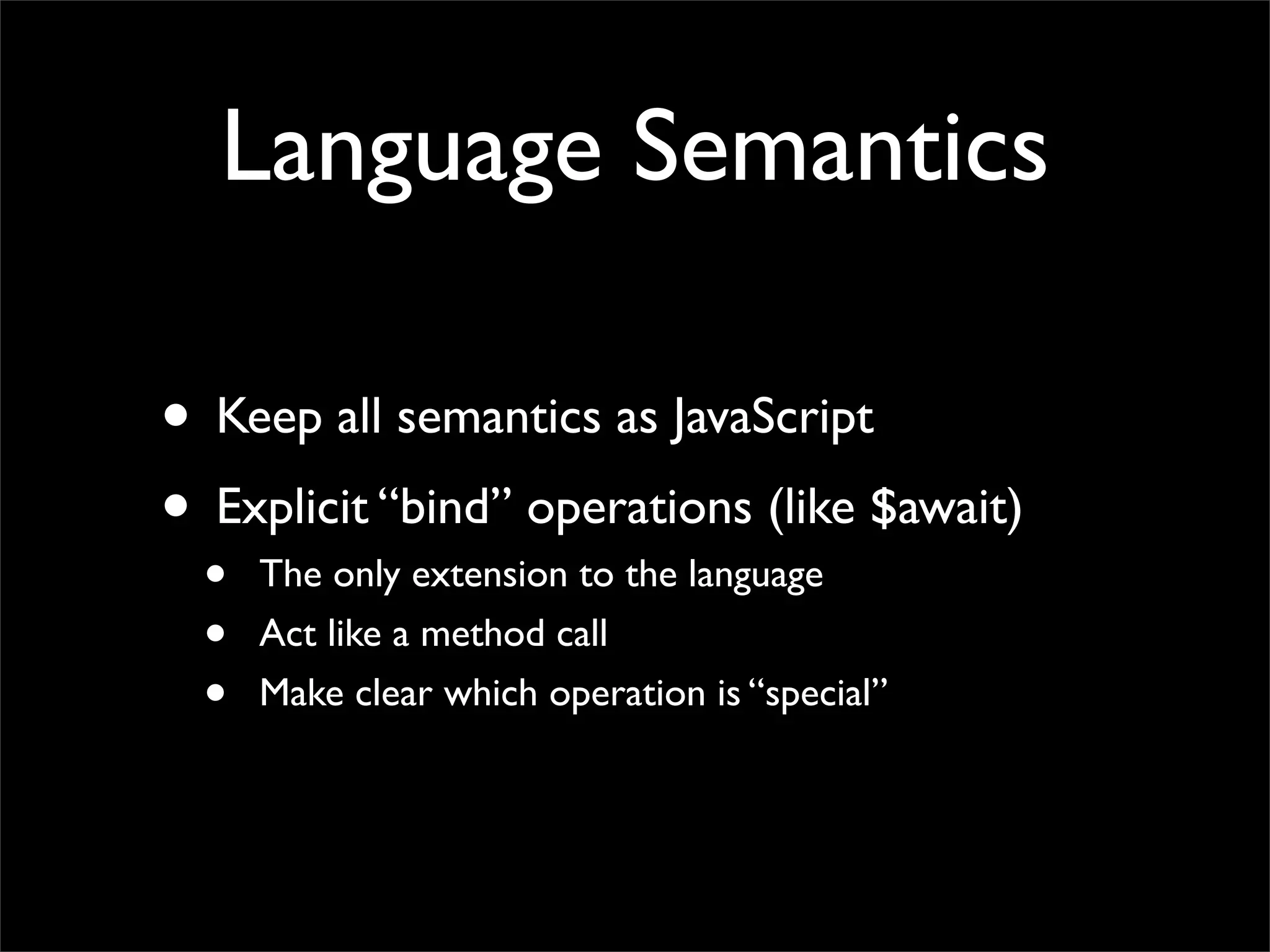
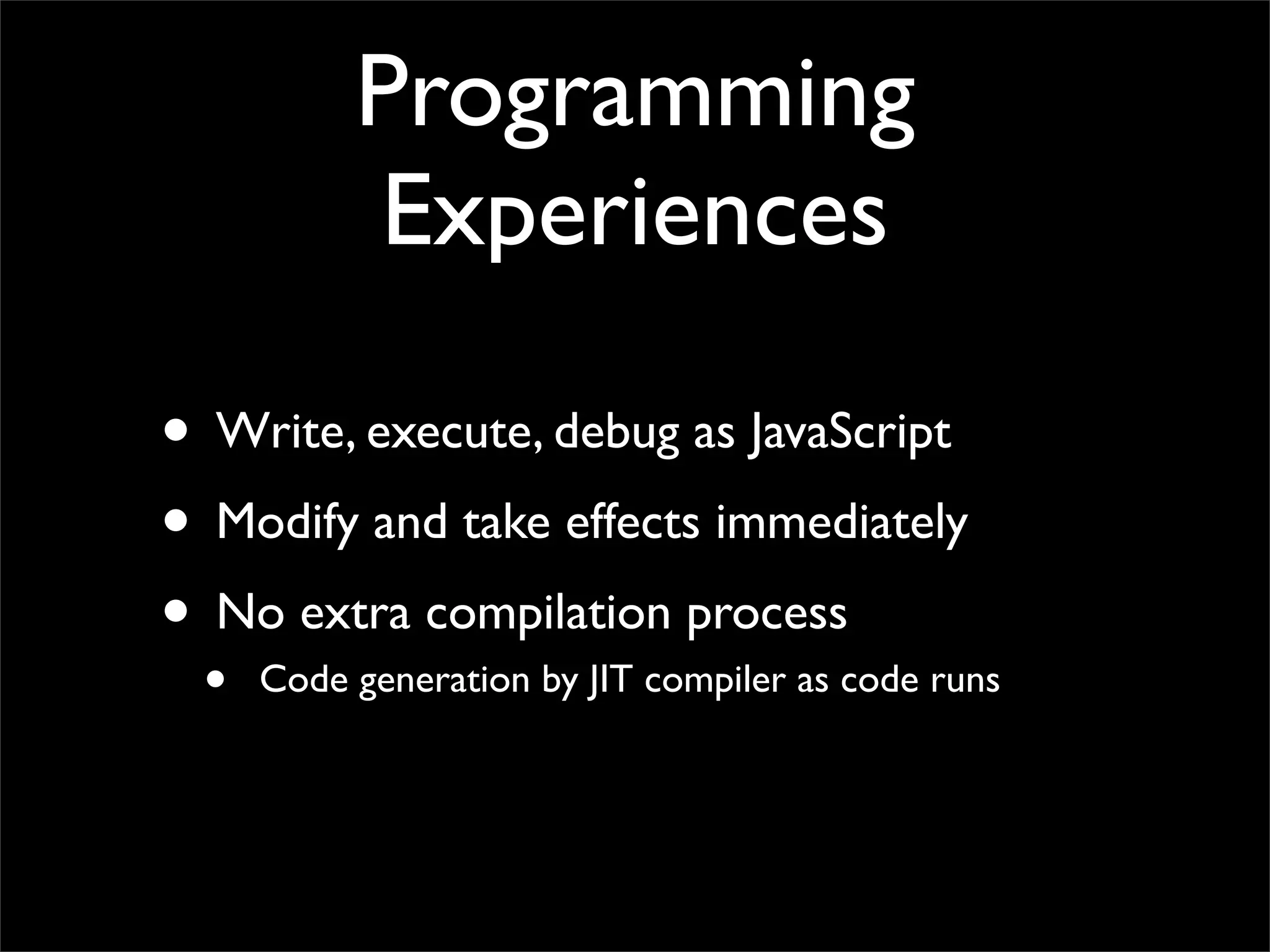

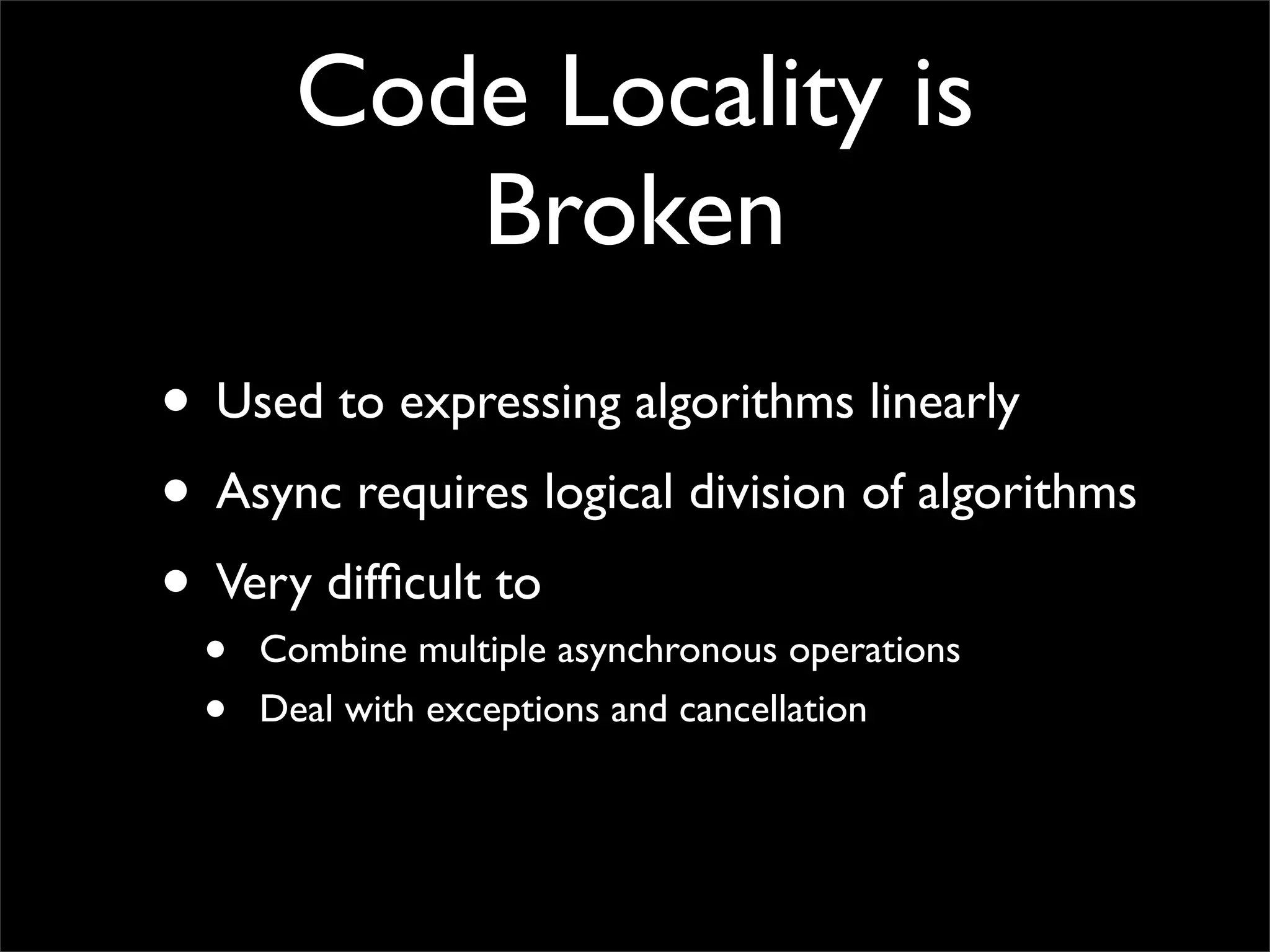

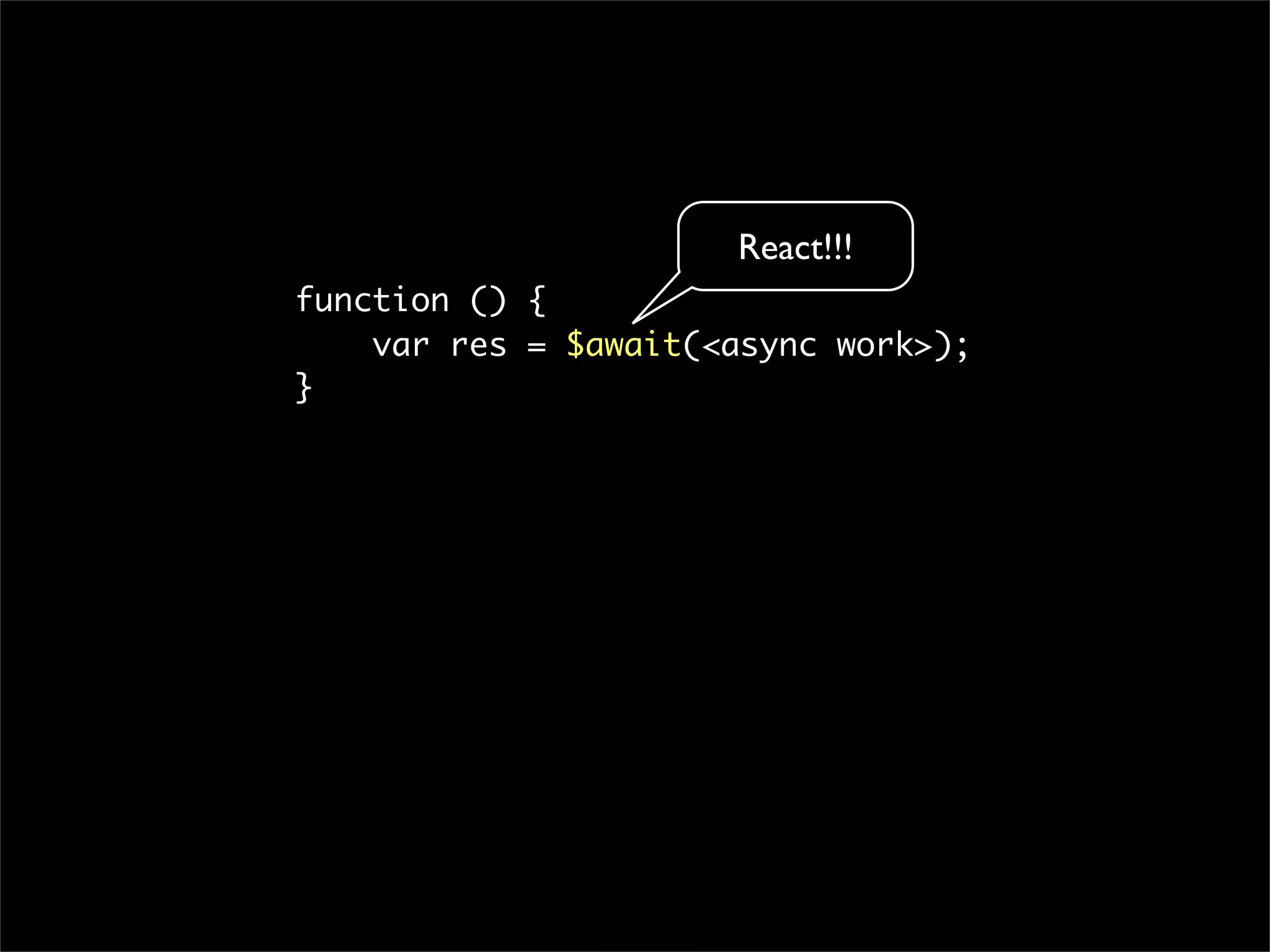
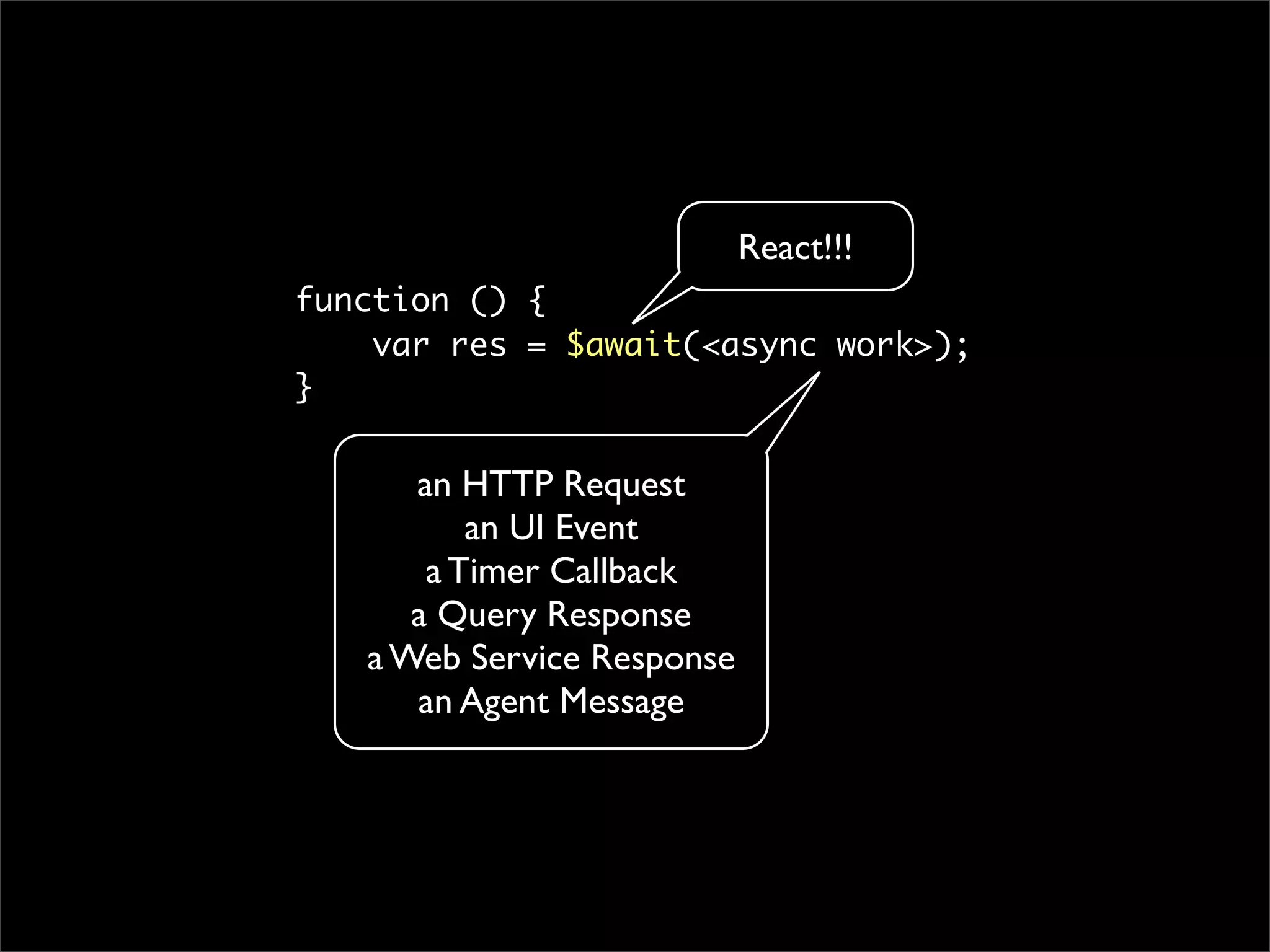
![function () {
var img = $await(readAsync("http://..."));
console.log("loaded!");
$await(writeAsync("./files/..."));
console.log("saved!");
}
=
(function () {
var _b_ = Jscex.builders["async"];
return _b_.Start(this,
_b_.Delay(function () {
_b_.Bind(readAsync(...), function (img) {
console.log("loaded!");
return _b_.Bind(writeAsync(...), function () {
console.log("saved!");
return _b_.Normal();
});
});
})
);
})](https://image.slidesharecdn.com/jscex-110515222707-phpapp02/75/Jscex-Write-Sexy-JavaScript-21-2048.jpg)
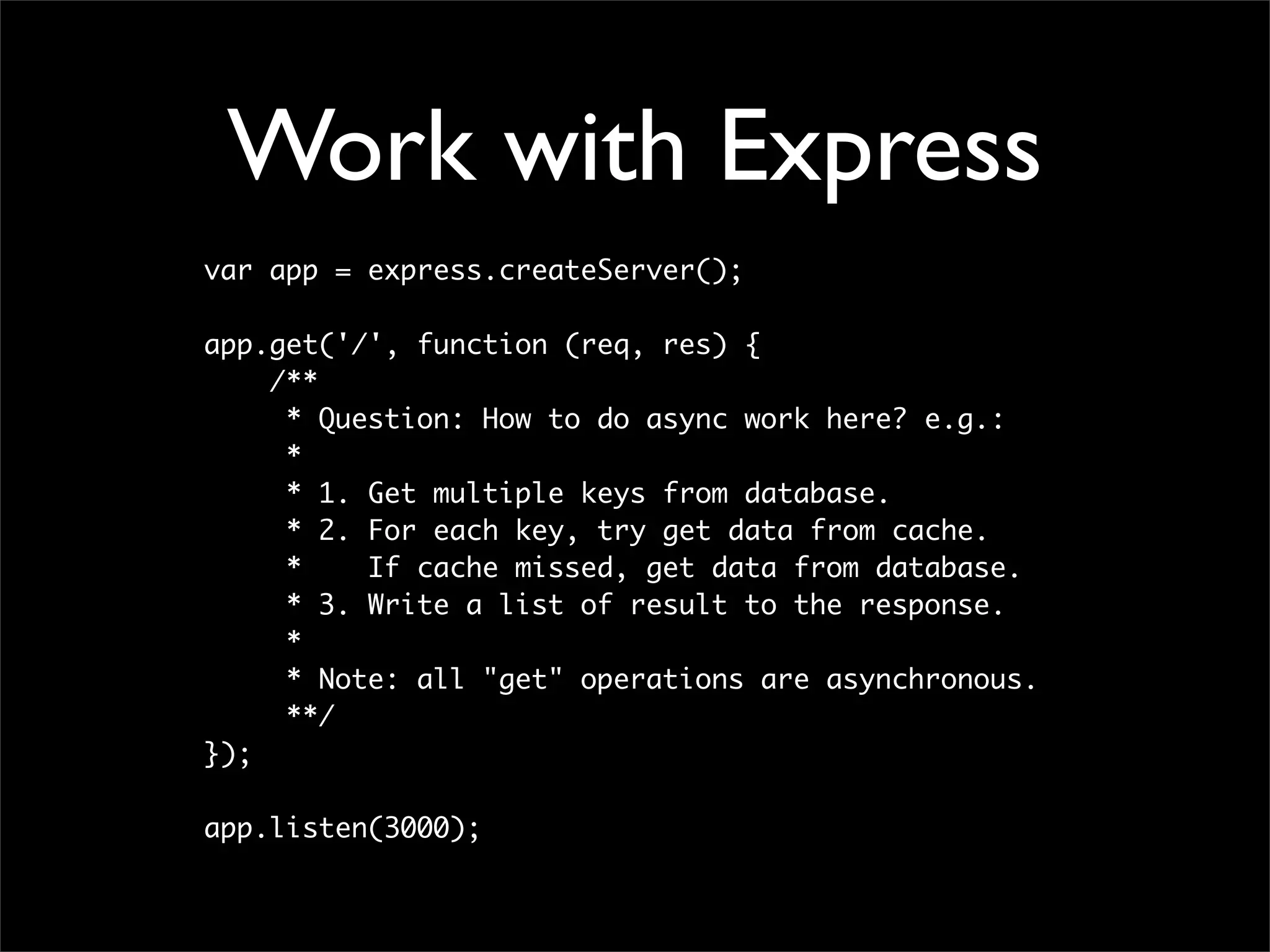
![app.getAsync('/', eval(Jscex.compile("async", function (req, res) {
var keys = $await(db.getKeysAsync(...));
var results = [];
for (var i = 0; i < keys.length; i++) {
var r = $await(cache.getAsync(keys[i]));
if (!r) {
r = $await(db.getAsync(keys[i]));
}
results.push(r);
}
res.send(generateList(results));
})));](https://image.slidesharecdn.com/jscex-110515222707-phpapp02/75/Jscex-Write-Sexy-JavaScript-23-2048.jpg)

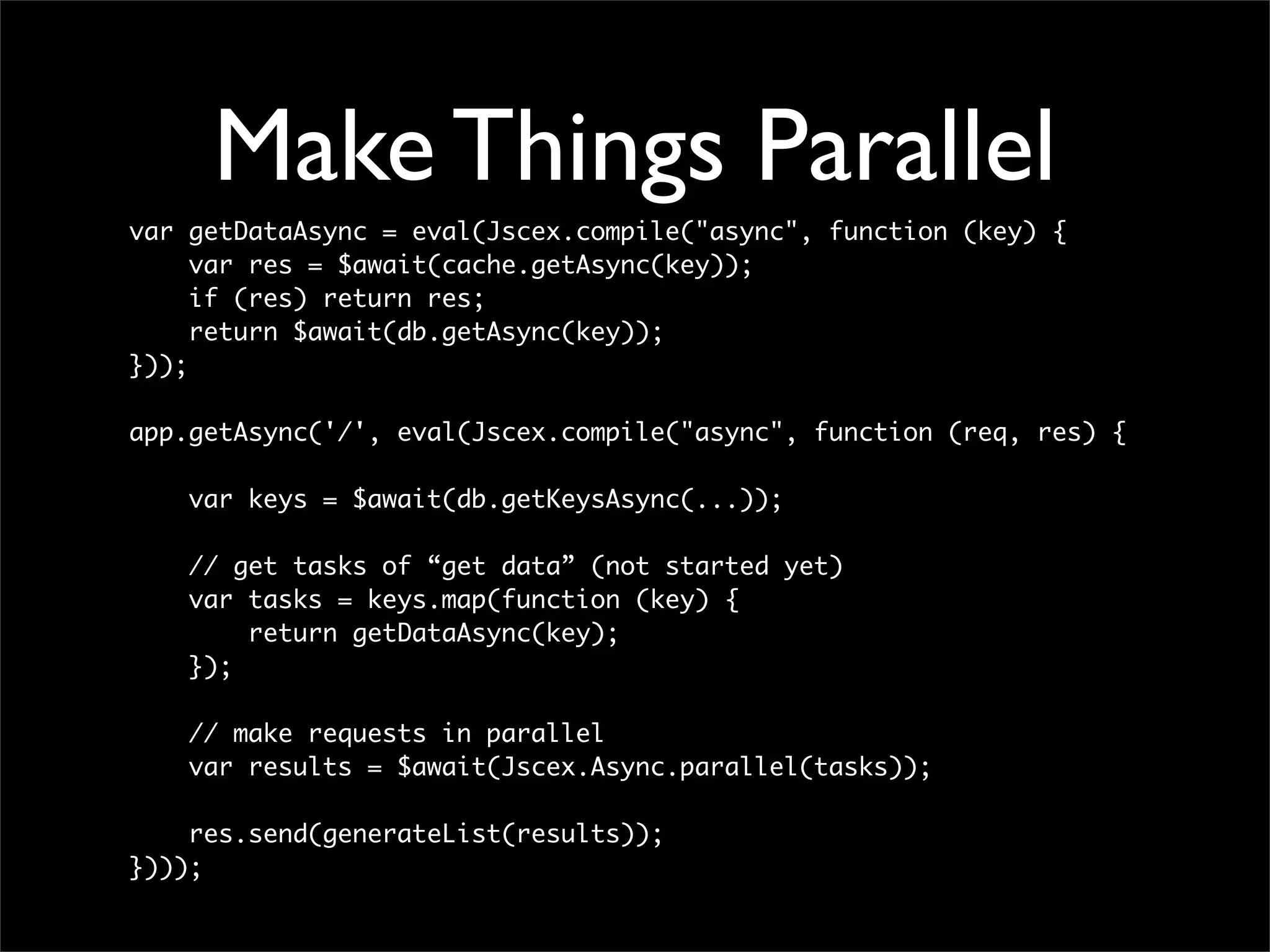
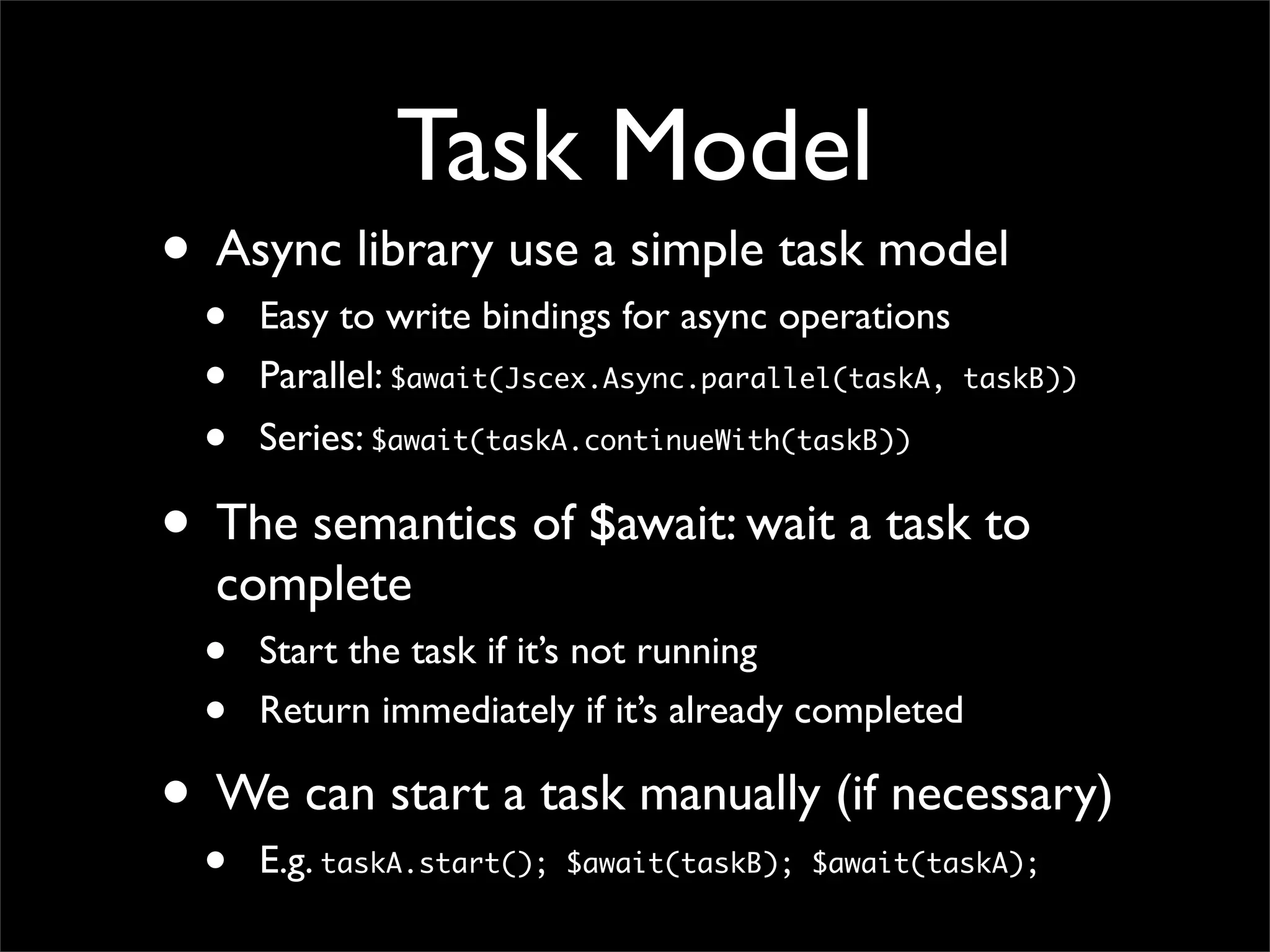

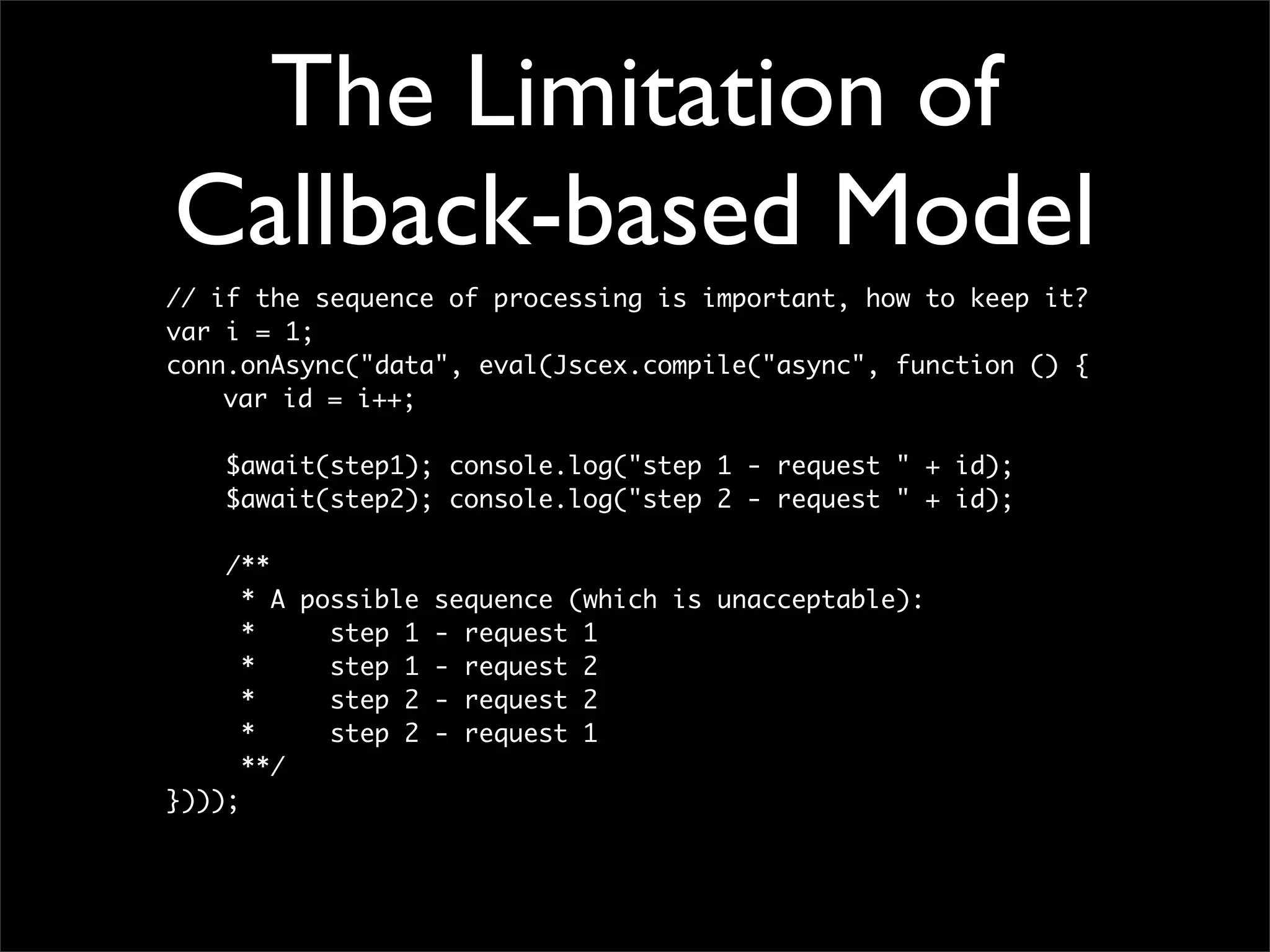
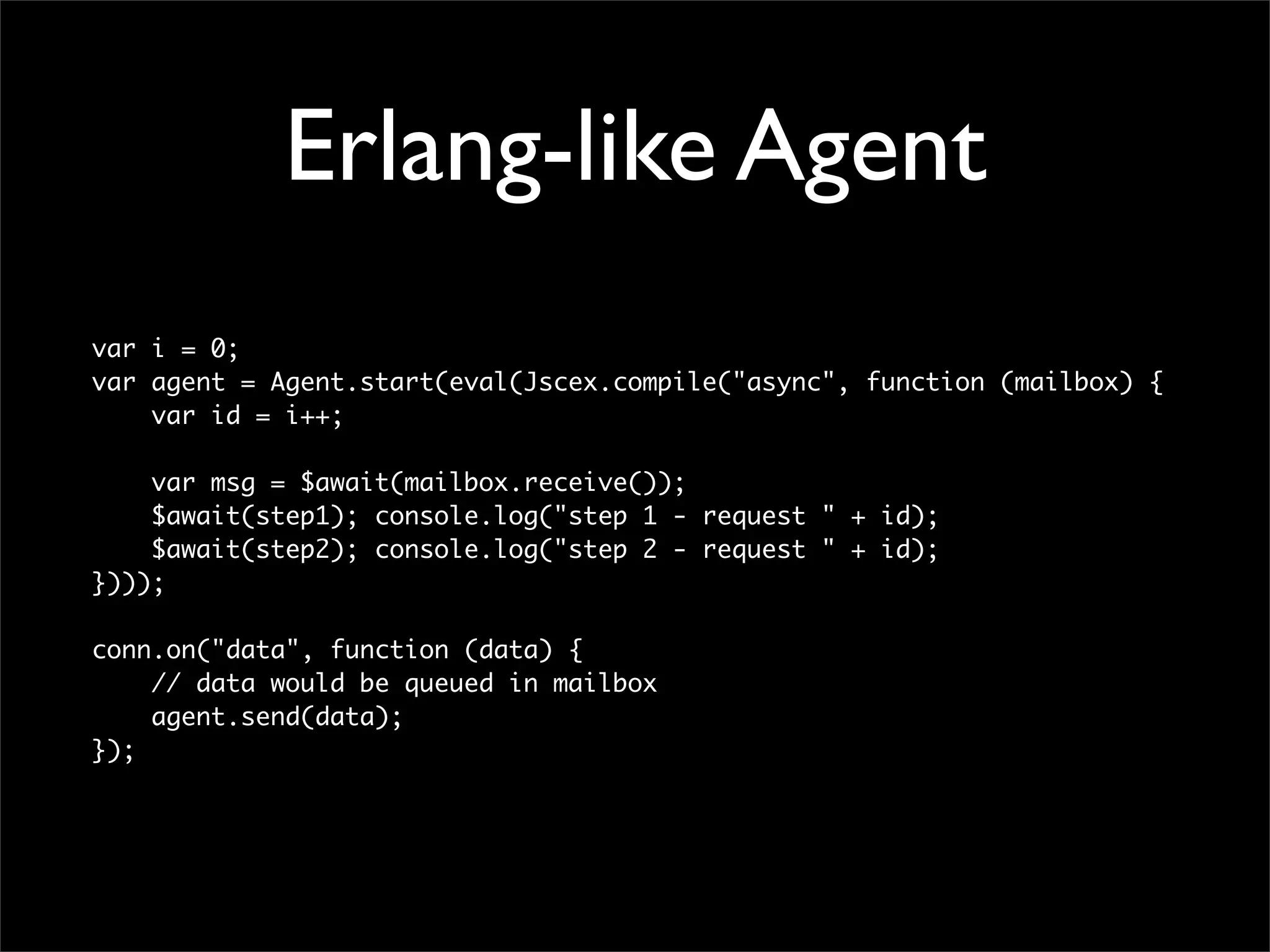

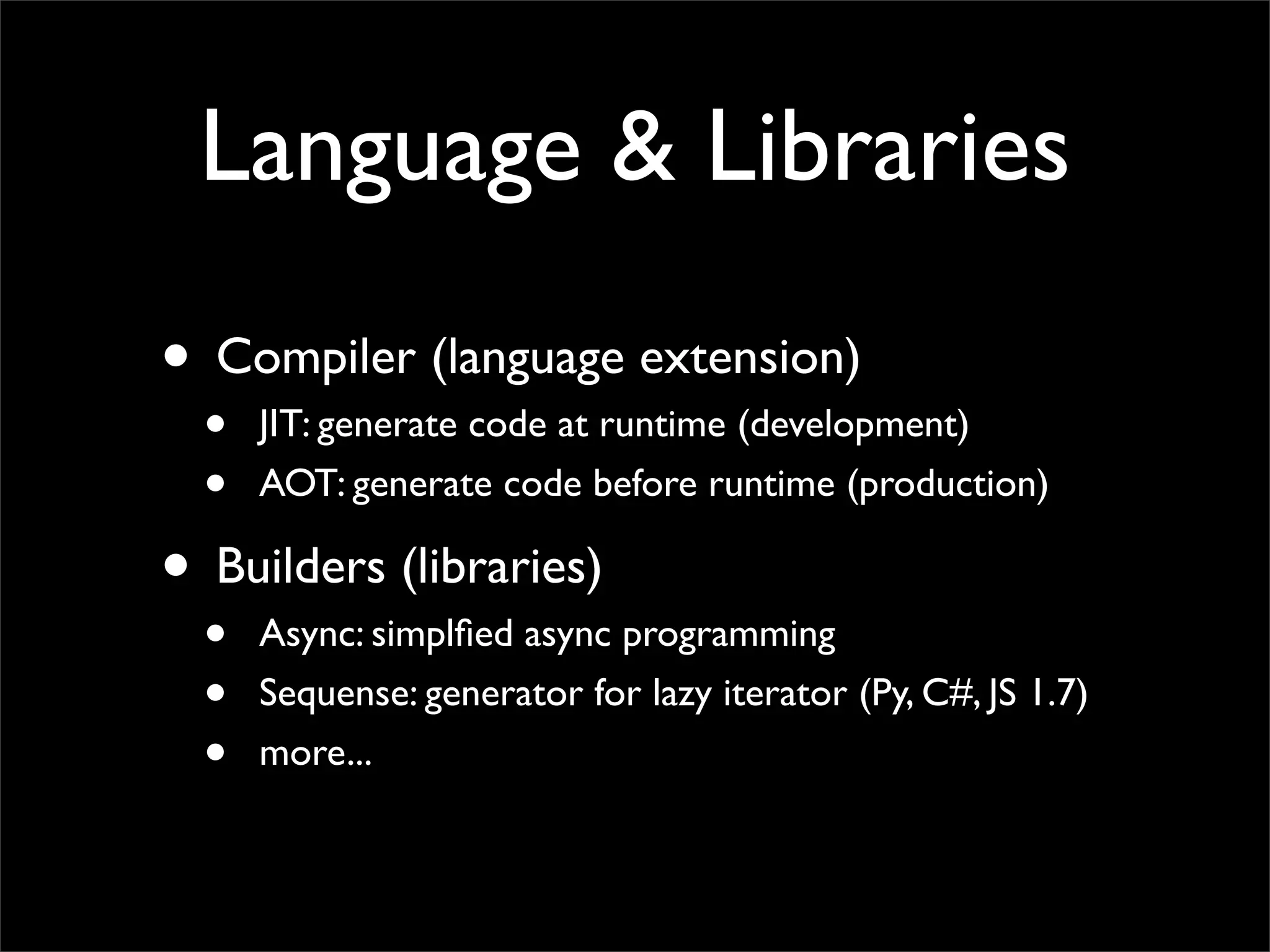
![AOT Compiler
// before AOT compilation
Agent.start(eval(Jscex.compile("async", function (mailbox) {
...
})));
// after AOT compilation
// independent of compiler scripts
// need a tiny library only (3kb when gzipped)
Agent.start((function (mailbox) {
var _b_ = Jscex.builders["async"];
return _b_.Start(this,
...
);
}));](https://image.slidesharecdn.com/jscex-110515222707-phpapp02/75/Jscex-Write-Sexy-JavaScript-32-2048.jpg)
